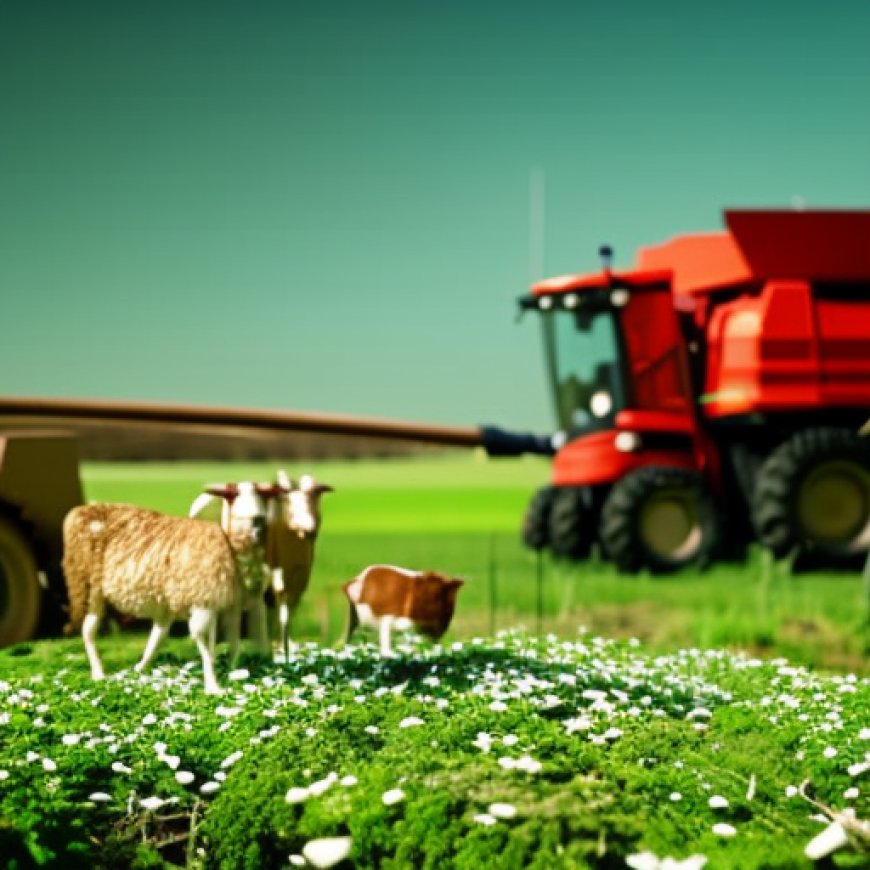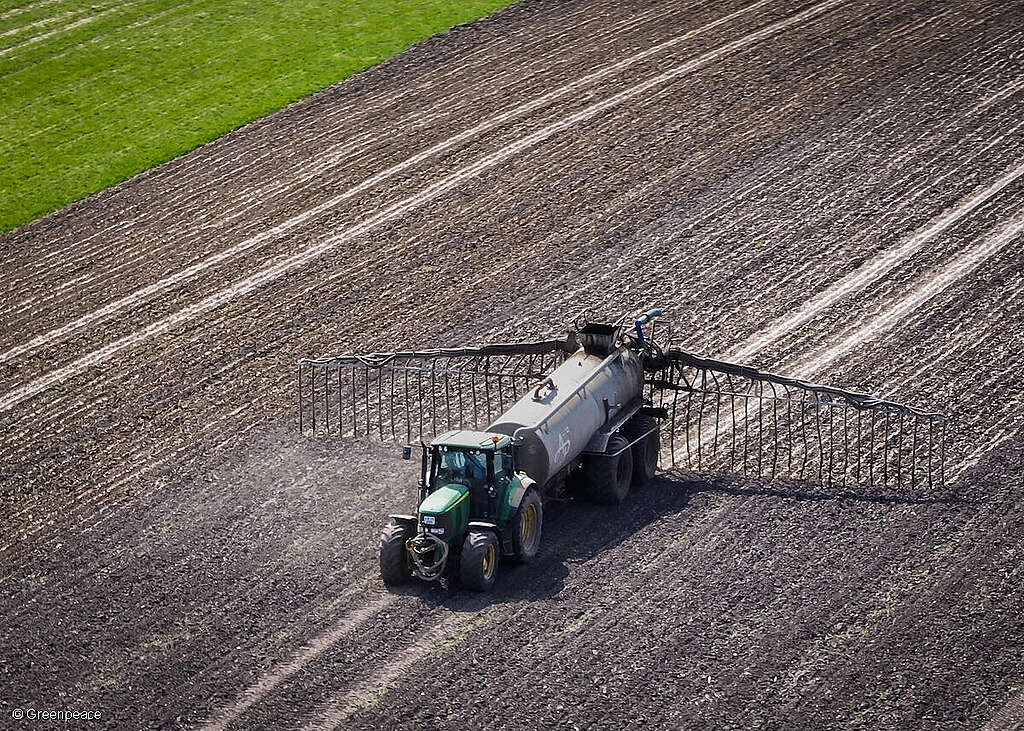EU Parliament shreds nature protection in farming – Greenpeace European Unit
EU Parliament shreds nature protection in farming greenpeace.org


Brussels – European Parliament Votes to Remove Environmental Protections on Farms
The European Parliament today voted to bin rules protecting nature and soil quality on farms, in a move that jeopardizes Europe’s ability to feed future generations, Greenpeace has warned.
Removal of Environmental Requirements in EU’s Common Agricultural Policy
The Parliament approved a European Commission proposal to remove requirements in the EU’s common agricultural policy for farms to protect soils, leave a small percentage of land to nature, and rotate their crops, among other limited measures to protect the environment. The plan also exempts nearly 17 million hectares of farmland – the size of Germany’s total agricultural land – from any environmental controls.
Greenpeace EU Agriculture Policy Director Marco Contiero’s Statement
Greenpeace EU agriculture policy director Marco Contiero said: “Droughts have ruined harvests across southern Europe, some of the wettest months on record are doing the same in the north. Most farmers are rightly demanding a fair income and to be protected from a ruthless market dominated by some major players who squeeze them for every cent. Throwing the last protections for nature in Europe’s countryside into the thresher won’t save farmers and will leave us all more vulnerable to extreme weather wrecking crops and livelihoods. This vote shreds the last scraps of credibility that the EU’s farm policy protects the environment and the public interest.”

Contradiction to Sustainable Development Goals (SDGs)
The Commission’s proposal, drafted in just a few weeks in response to farmers’ protests, has been approved by the Parliament at the last plenary session before EU elections in June. The vote was rushed onto the Parliament’s agenda using a procedure which shortcuts political debates and skips votes in the Parliament’s responsible committees.
In its first-ever climate risk assessment report, published in March this year, the European Environment Agency said that the EU must change its farm policy to encourage more sustainable farming practices and stressed that “reducing pollution from agricultural and industrial activities should be a priority for protecting Europe’s ecosystems under climate change”. The changes approved today take European farming in completely the opposite direction, Greenpeace warned.
Next Steps
The proposal passed by the European Parliament will need to be formally approved by national agriculture ministers at one of their upcoming Council meetings.
Contacts:
- Marco Contiero, Greenpeace EU agriculture policy director: +32 477 77 70 34, [email protected]
- Greenpeace EU press desk: +32 2 274 19 11, [email protected]
For breaking news and comment on EU affairs: www.twitter.com/GreenpeaceEU
Greenpeace is an independent global campaigning network that acts to change attitudes and behavior, to protect and conserve the environment and to promote peace. We do not accept donations from governments, the EU, businesses, or political parties. Greenpeace has over three million supporters and 26 independent national and regional organizations with offices in more than 55 countries.
EU Transparency Register: 9832909575-41
SDGs, Targets, and Indicators Analysis
1. Which SDGs are addressed or connected to the issues highlighted in the article?
- SDG 2: Zero Hunger
- SDG 15: Life on Land
The issues highlighted in the article are connected to SDG 2, which aims to end hunger, achieve food security and improved nutrition, and promote sustainable agriculture. The removal of rules protecting nature and soil quality on farms can jeopardize Europe’s ability to feed future generations.
The issues are also connected to SDG 15, which focuses on protecting, restoring, and promoting sustainable use of terrestrial ecosystems. The removal of requirements for farms to protect soils, leave land to nature, and rotate crops can have negative impacts on soil quality and biodiversity.
2. What specific targets under those SDGs can be identified based on the article’s content?
- Target 2.4: By 2030, ensure sustainable food production systems and implement resilient agricultural practices that increase productivity and production, that help maintain ecosystems, that strengthen capacity for adaptation to climate change, extreme weather, drought, flooding, and other disasters, and that progressively improve land and soil quality.
- Target 15.1: By 2020, ensure the conservation, restoration, and sustainable use of terrestrial and inland freshwater ecosystems and their services, in particular forests, wetlands, mountains, and drylands, in line with obligations under international agreements.
The removal of rules protecting nature and soil quality on farms goes against the targets mentioned above. It hinders the implementation of resilient agricultural practices, reduces the capacity for adaptation to climate change and extreme weather events, and threatens the conservation and sustainable use of terrestrial ecosystems.
3. Are there any indicators mentioned or implied in the article that can be used to measure progress towards the identified targets?
- Indicator 2.4.1: Proportion of agricultural area under productive and sustainable agriculture.
- Indicator 15.1.1: Forest area as a proportion of total land area.
The article does not explicitly mention these indicators, but the removal of rules protecting nature and soil quality on farms can negatively impact the proportion of agricultural area under sustainable agriculture and the forest area as a proportion of total land area. These indicators can be used to measure progress towards the identified targets.
SDGs, Targets, and Indicators Table
| SDGs | Targets | Indicators |
|---|---|---|
| SDG 2: Zero Hunger | Target 2.4: By 2030, ensure sustainable food production systems and implement resilient agricultural practices that increase productivity and production, that help maintain ecosystems, that strengthen capacity for adaptation to climate change, extreme weather, drought, flooding, and other disasters, and that progressively improve land and soil quality. | Indicator 2.4.1: Proportion of agricultural area under productive and sustainable agriculture. |
| SDG 15: Life on Land | Target 15.1: By 2020, ensure the conservation, restoration, and sustainable use of terrestrial and inland freshwater ecosystems and their services, in particular forests, wetlands, mountains, and drylands, in line with obligations under international agreements. | Indicator 15.1.1: Forest area as a proportion of total land area. |
Behold! This splendid article springs forth from the wellspring of knowledge, shaped by a wondrous proprietary AI technology that delved into a vast ocean of data, illuminating the path towards the Sustainable Development Goals. Remember that all rights are reserved by SDG Investors LLC, empowering us to champion progress together.
Source: greenpeace.org

Join us, as fellow seekers of change, on a transformative journey at https://sdgtalks.ai/welcome, where you can become a member and actively contribute to shaping a brighter future.







